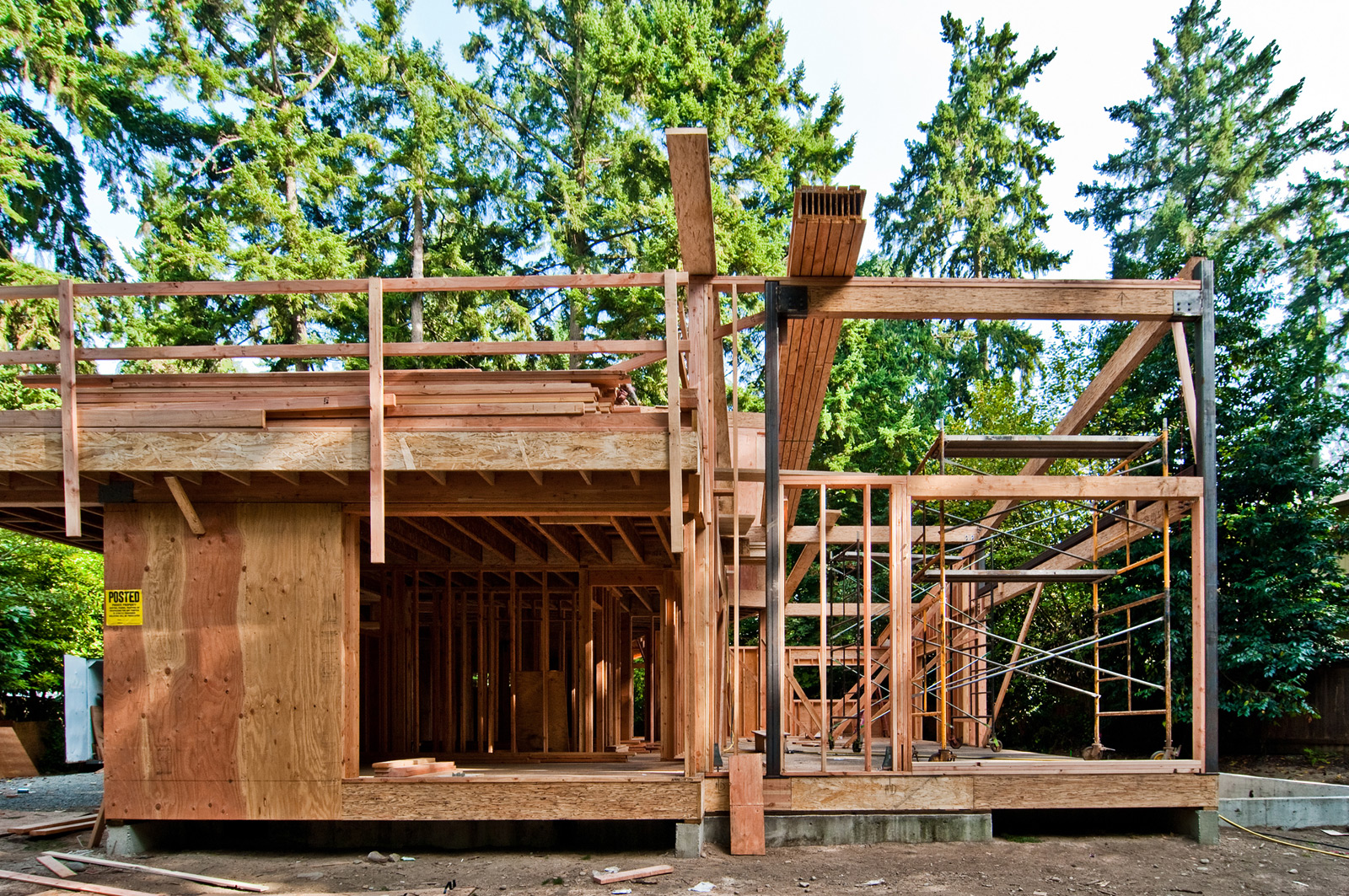
[All photos by BUILD LLC]
The framing package was just completed on a current project of ours, and it proved to be more challenging than we anticipated. Although we’ve been at this for a number of years (given the amount of gray hair in the mirror, it’s definitely “a number” of years), we were fortunate to gain more knowledge from the process and want to pass along our observations and the lessons we learned.
There were five main factors that led to the framing being more involved than our typical residential projects:
1. We re-used a portion of an existing foundation from the previous home, itself built in three phases, as part of the new design. While this was advantageous in many ways, the foundation was skewed on the site, way out of level, and poorly positioned with respect to the property lines.

2. The program required the new structure to maximize the lot coverage while the local covenants regulated strict site constraints and floor area ratios.
3. We designed the new house to incorporate two different geometries: one orthogonal to the property lines, the other in line with the existing (and skewed) foundation. This created a series of “hinges” within the floor plan where the new meets the old.

4. The design continued to evolve and it became more important to have orthogonal spaces at the interior, rather than celebrating the hinges.
5. Modernism is unforgiving when it comes to hiding imperfections so all the complicated connections required by the angles needed to be carefully fabricated, installed, and then concealed.
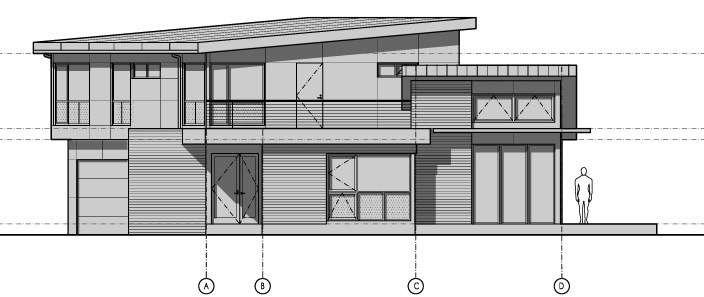
Much of the complications, like complicated beam framing to take advantage of the skewed foundation, were self-inflicted and we take full responsibility (as Architects, we’ve been highly accustomed to painting ourselves into corners; we wake up dreaming of back-up plans). We were very fortunate to have a team of rock-star framers; a huge thanks to Alexander’s Custom Homes Inc., who worked through each and every framing issue with us and implemented clean solutions. A ton of thinking and effort was put into resolving the framing issues, but as you can imagine, that’s just the start of the complications, and we found the domino effect to be lengthy.
Here are five additional areas affected by a complicated framing package:
1. Roof venting becomes dramatically more challenging. The number of large beams in unusual locations means that joist bays can’t be conventionally vented to eaves. We ended up utilizing spray-foam insulation in some areas so that portions of the roof cavity are packed solid and subsequently don’t require venting. In other areas, our structural engineer, the fearless Aaron Pambianco, calculated the maximum possible area that the beams could be notched to provide natural ventilation.
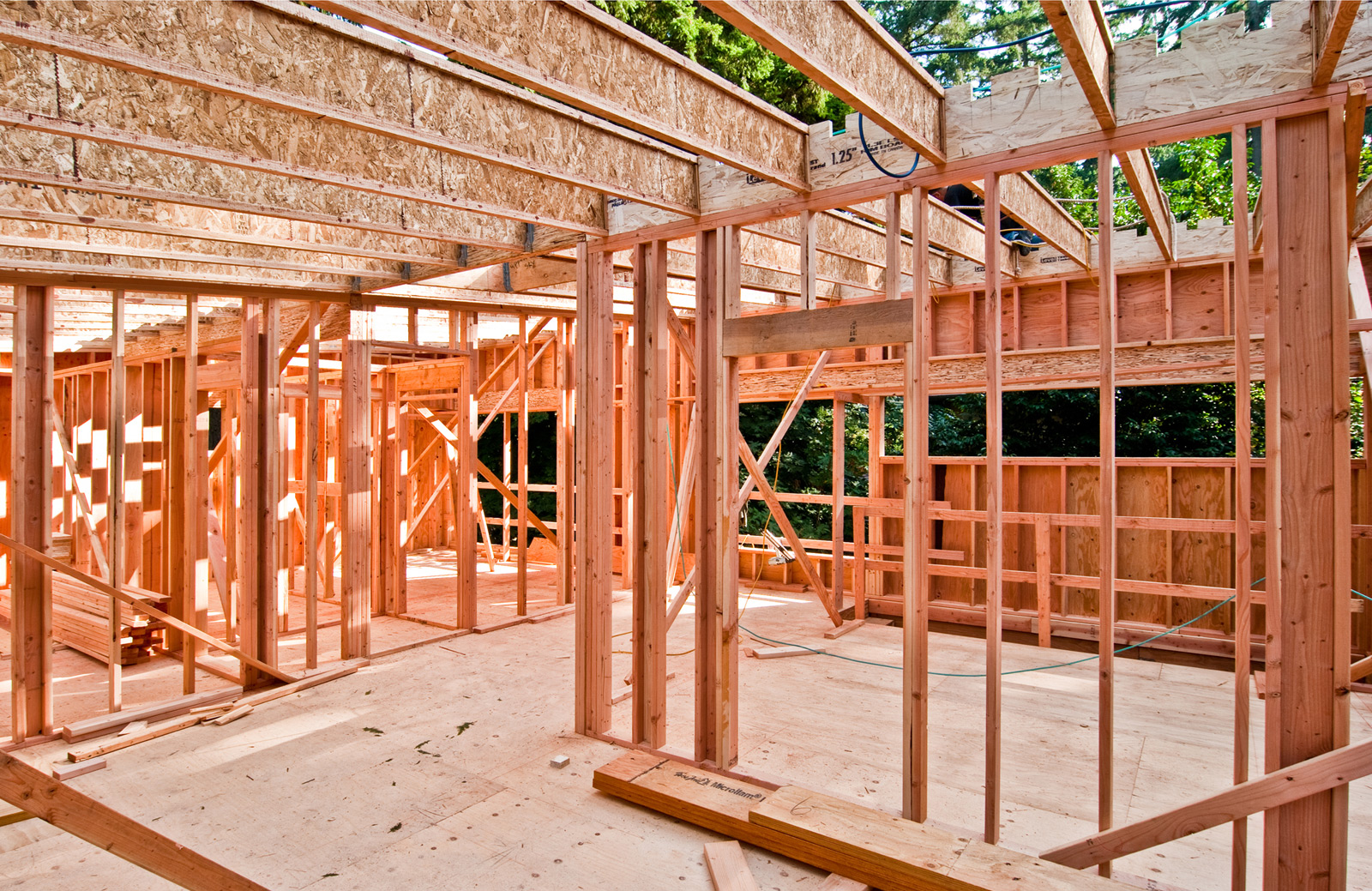
2a. The beam to column attachments at angles require complicated steel connectors that often need to be custom fabricated. Normally this could get very expensive, fortunately we have our own steel shop and we were able to produce some very tricky hardware connectors based on all sorts of different site conditions — a big thanks to steel ninjas Bart Gibson and Skyler Holmes.
2b. With two different grids coming together, there are lots of these connections.

3a. Keeping the interior orthogonally oriented creates a second layer of framing to overframe and conceal some of the hinge points of the primary structure.
3b. Covering up the primary structural features is a no-no of modernism, forcing us to wrestle with our modernist training. Some of the complicated wood and steel connections are down-right gorgeous and it’s a shame that they’ll be buried behind drywall. Then again, some of the volumes will have an air of mystery as to what is holding them up (we like that part).
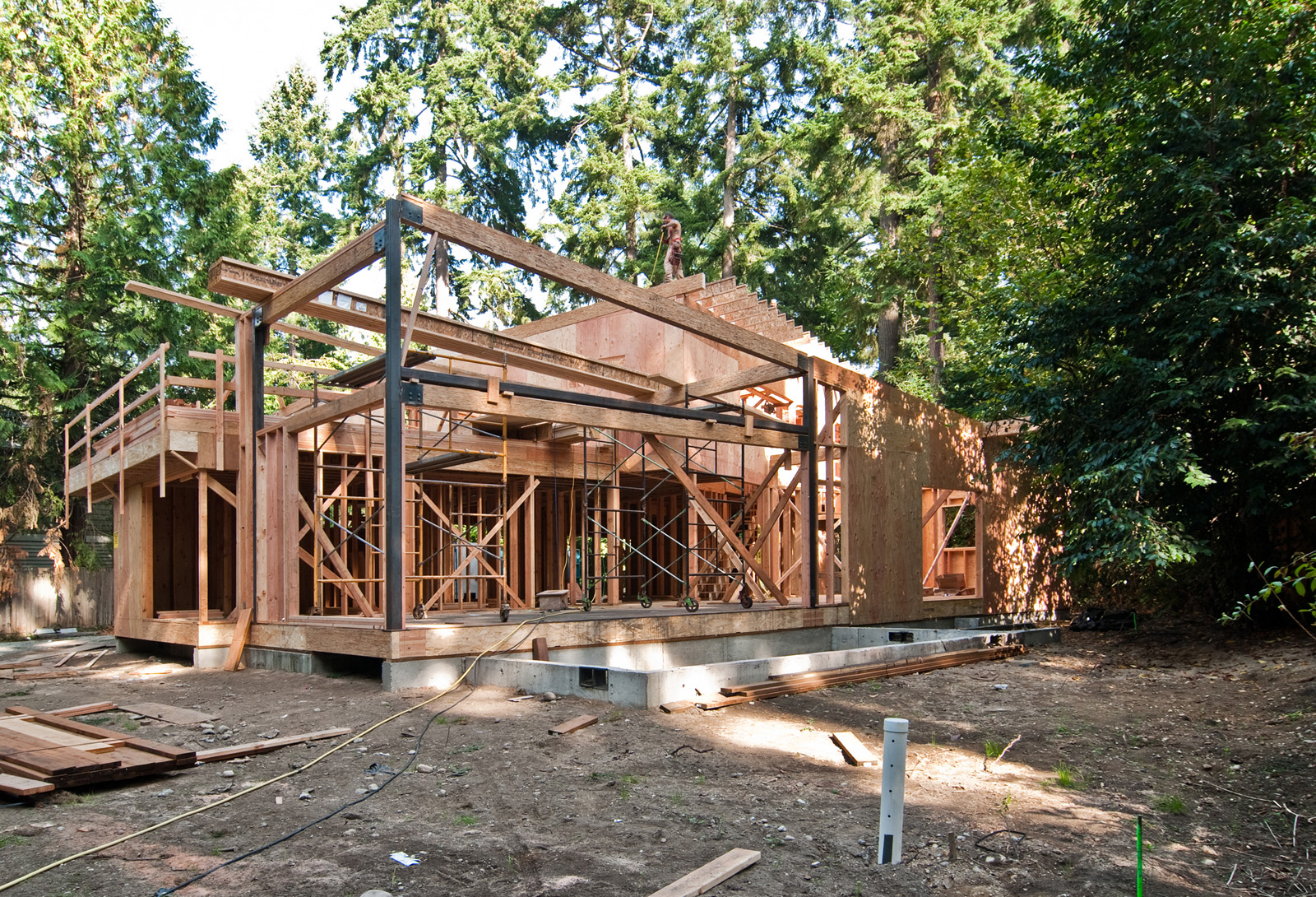
4. Say goodbye to those regular and predictable grids of recessed can lights. Angled joists will take your neat and tidy lighting plan and spit it out the window.
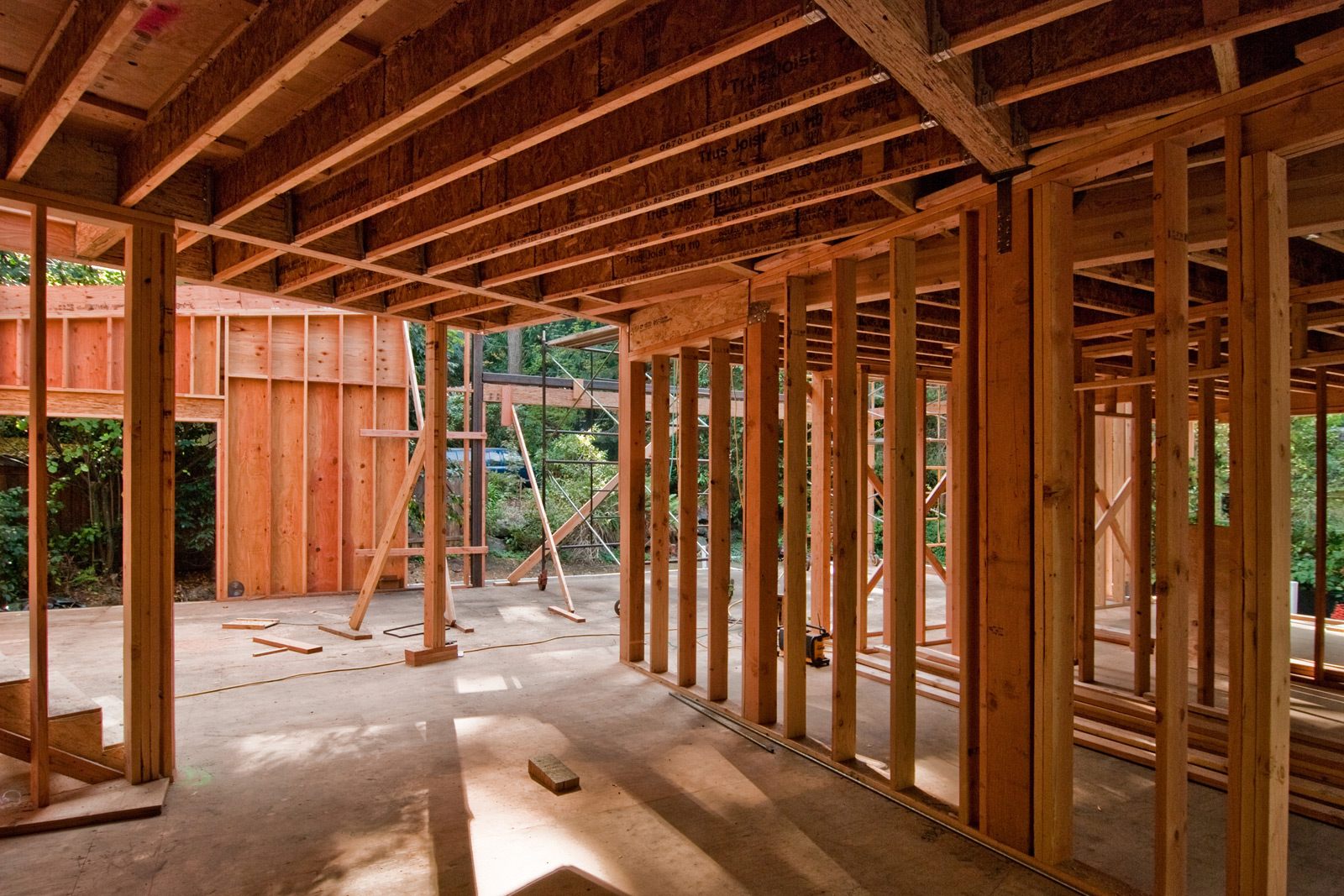
5. The expenses can go up in a variety of areas. Spray foam insulation can be two- to three-times more expensive than batt insulation (so we learned to budget even more than just an incremental add in this area). Even with a steel shop at our disposal, the time involved with custom fabricating the steel connections can be costly. Additional framing can add cost. And going back to the drawing board to work with as built conditions (like that revised lighting plan) can cost time.

We feel that we solved the majority of these situations effectively and are better equipped for circumstances like this in the future. As a team, we’ve been fortunate to quickly identify and remedy issues and work within the contingency we established for these items. The items that didn’t have direct solutions (like #3b) go straight into our bag of wisdom with the current design projects we’re working on. We’re big fans of that saying “if it doesn’t kill you, it only makes you stronger” and we’re going to go ahead and play that card here. Plus, it always helps to have calm, understanding clients who can roll with the construction process.
All in all, the project is coming along very well and we look forward to sharing more about the construction phases with you.

Cheers from team BUILD





